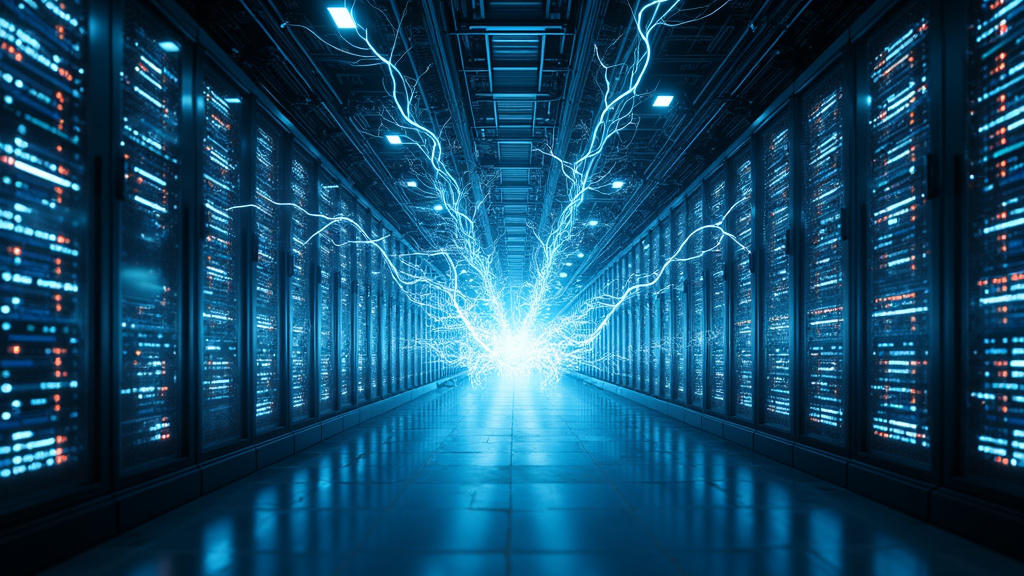The global race for artificial intelligence dominance is encountering a significant obstacle: the AI Energy Crisis. As cutting-edge AI technologies rapidly evolve and become integrated into nearly every facet of modern life, the colossal energy demands of the underlying digital infrastructure are placing immense strain on electricity grids worldwide. This burgeoning need for power is prompting substantial investments, innovative solutions, and critical discussions about the future of energy supply, directly addressing the AI Energy Crisis. This is the top technology news of the moment.
The Insatiable Appetite of Artificial Intelligence and the AI Energy Crisis
The exponential growth of AI workloads, from training complex models to processing everyday queries and generating content, translates directly into an unprecedented surge in electricity consumption. Major tech giants, including Google, Microsoft, Amazon, and Meta, are at the forefront of this AI infrastructure build-out, projecting spending of around $400 billion in 2025 and even more in 2026 for AI-related capital expenditures. This massive investment is largely directed towards building and expanding data centers, which house the specialized, power-hungry hardware—particularly Graphics Processing Units (GPUs) and Tensor Processing Units (TPUs)—required for AI computation. The scale of these AI power demands is a key driver of the AI Energy Crisis.
Unlike traditional computing, AI operations are characterized by a constant, ‘always-on’ demand, creating a sustained peak load on power grids. Estimates suggest that data center energy consumption is growing significantly faster than total electricity consumption from all other sectors, with projections indicating it could account for up to 20% of global electricity use by 2030-2035. A single AI-focused hyperscale data center can consume as much electricity annually as 100,000 households. This escalating demand is transforming global energy markets and presents a significant bottleneck to AI advancement, as noted by Microsoft CEO Satya Nadella, who highlighted energy supply as the defining challenge of AI deployment and a core component of the AI Energy Crisis.
Grid Strain and Infrastructure Bottlenecks Due to AI Power Demands
This rapid expansion of data centers is significantly straining existing electricity grids, leading to concerns about stability and reliability. In regions like Virginia, often referred to as “Data Center Alley” and a top global data center market, utility providers are grappling with immense demand. Dominion Energy, for instance, has reported a data center order book of 47 gigawatts, a figure that doubles its current peak demand. Meeting such demand requires extensive upgrades to transmission and distribution infrastructure, a process that can take years to plan, permit, and construct, exacerbating the electricity grid strain.
The consequences are far-reaching. Utilities are forced to make costly grid enhancements, which can eventually translate into higher electricity bills for consumers. In some areas, price increases of $15 to $18 per month for residential customers have been linked to the growing data center load. Furthermore, the fluctuating nature of data center power demands, which can change by hundreds of megawatts within seconds, poses substantial stability risks to power grids, challenging grid operators and potentially impacting the reliability of electricity supply.
The Quest for Sustainable Power Solutions to Combat the AI Energy Crisis
In response to these challenges, tech giants and energy providers are aggressively pursuing diverse and often innovative energy solutions to mitigate the AI Energy Crisis. The trending focus is on ensuring both reliability and sustainability.
Renewable Energy Integration for AI: Solar and wind power are key components in the strategy for powering AI data centers. Many facilities are installing large-scale solar farms or entering agreements for wind energy. However, the intermittency of these sources necessitates robust energy storage solutions, such as large-scale battery systems, to provide consistent power. Energy campuses, which co-locate data centers with dedicated renewable energy for AI generation, are also emerging as a strategy to ensure reliable, scalable, and sustainable operations independent of constrained utility grids.
Nuclear Power’s Resurgence for AI Infrastructure: Nuclear energy is experiencing renewed interest as a reliable, high-density, and zero-emission baseload power source capable of meeting the constant demands of AI data centers. Small Modular Reactors (SMRs) are particularly being considered for their flexibility and suitability for powering large facilities. Several major tech companies have already signed procurement agreements for nuclear capacity, signaling a growing trend toward this energy source to address AI infrastructure costs.
Futuristic Concepts and Efficiency: Pushing the boundaries, Google has unveiled Project Suncatcher, a research initiative exploring the deployment of solar-powered satellites in orbit to process AI workloads. The idea is to harness near-continuous solar energy and potentially overcome Earth-bound energy and cooling limitations. Alongside these ambitious projects, companies are investing in energy efficiency through advanced cooling technologies like liquid immersion cooling and designing more power-efficient chips.
Broader Resource Demands
Beyond electricity, the AI revolution also intensifies other resource strains. Data centers require vast amounts of water for cooling, with consumption rates already impacting local water supplies in some regions and indirectly contributing to water withdrawal for electricity generation. The manufacturing of specialized AI hardware, such as GPUs, also carries a significant environmental footprint due to complex fabrication processes and material extraction.
The Road Ahead: Navigating the AI Energy Crisis
The AI revolution, while promising transformative advancements, is undeniably confronting a critical energy bottleneck. The staggering power demands of AI infrastructure are forcing a rapid evolution in energy generation, distribution, and consumption strategies to overcome the AI Energy Crisis. As technology companies continue to pour billions into AI infrastructure, the successful scaling of artificial intelligence hinges on the development and deployment of sustainable, reliable, and sufficient energy resources. This ongoing news story highlights a pivotal moment where technological ambition must align with energy realities to shape a responsible and sustainable future.





